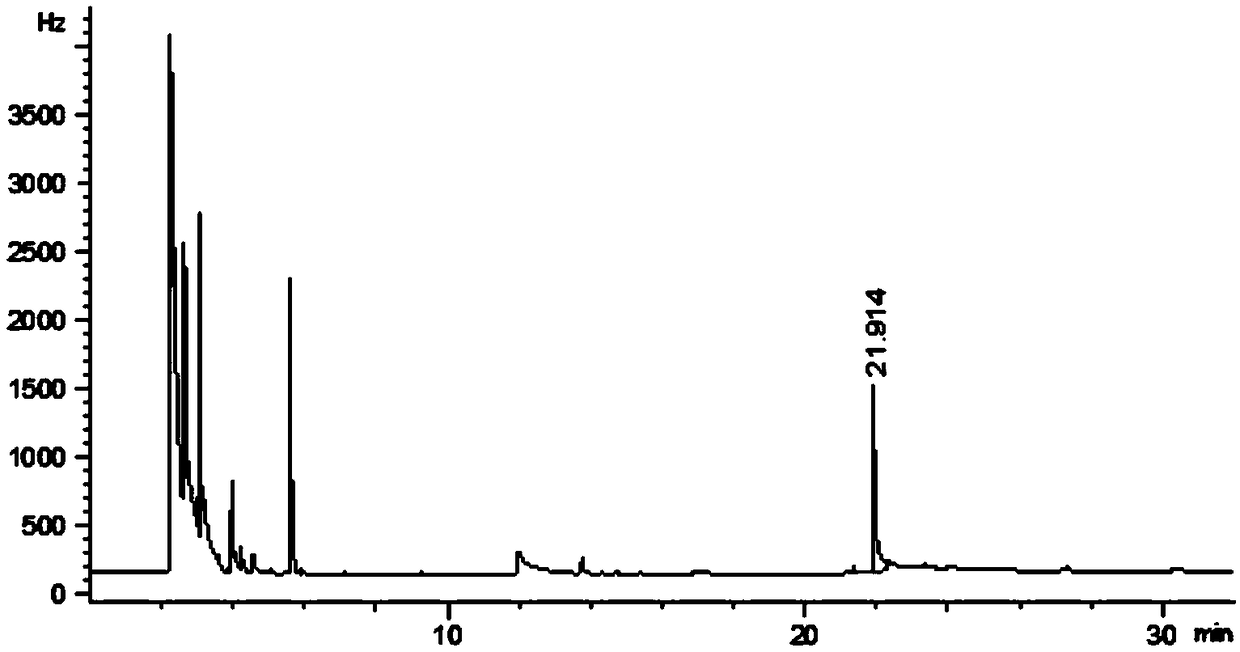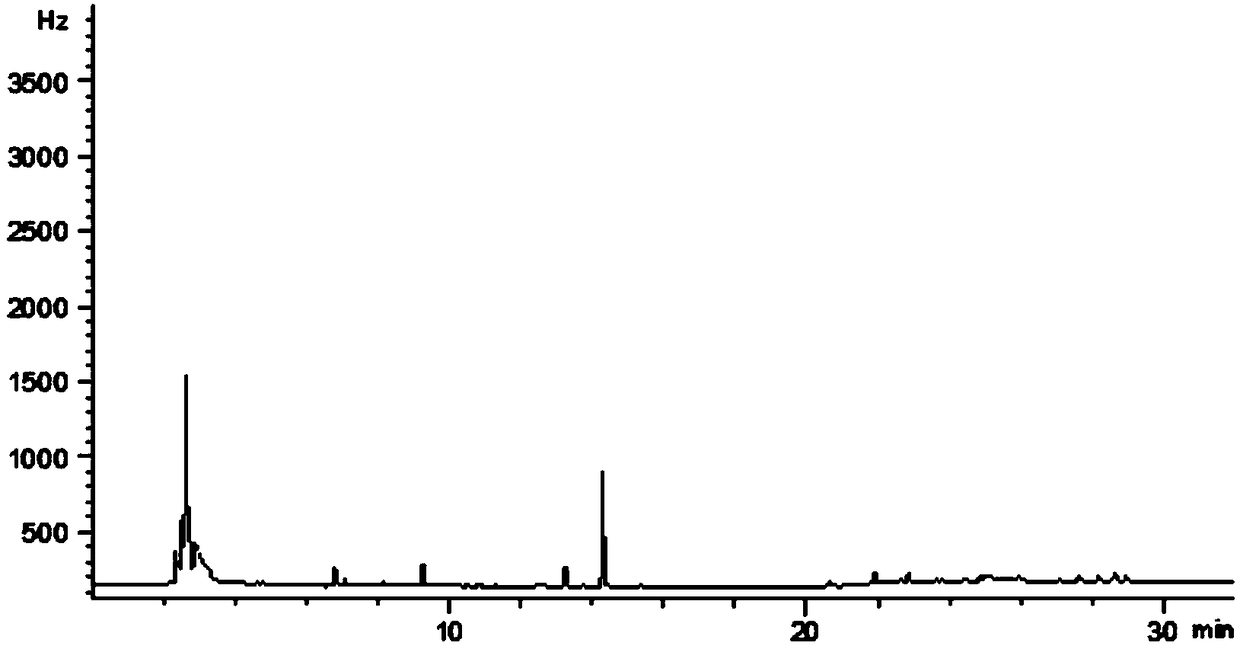A general-purpose quantitative detection method for chlorantraniliprole residues
A technology for quantitative detection of chlorantraniliprole, which is applied in the field of quantitative detection of general-purpose chlorantraniliprole residues, can solve the problems of high price, low processing efficiency, and cross-contamination of GC-MS instruments, and achieve Fast adsorption and depigmentation ability, large specific surface area, and large adsorption capacity
- Summary
- Abstract
- Description
- Claims
- Application Information
AI Technical Summary
Problems solved by technology
Method used
Image
Examples
Embodiment 1
[0048] Example 1: A quantitative detection method for chlorantraniliprole residues in tea
[0049] The blank tea samples were taken from the tea field of the Agricultural Science Research Institute in Taihu Lake, Jiangsu Province. No pesticides were applied during the planting process, and the fresh leaves picked were made into dry tea according to the traditional green tea processing technology.
[0050] The actual test tea samples were purchased from a supermarket, and the place of origin was Suzhou East Dongting Mountain Tea Garden. The tea samples were pulverized with a pulverizer, mixed, and stored in a refrigerator at 4 °C.
[0051] The quantitative detection method consists of two parts:
[0052] In the first part, the standard curve of the measured chlorantraniliprole with known gradient concentration is established by gas chromatography-electron capture method; the establishment of the standard curve consists of the following steps:
[0053] The first step is to pre...
Embodiment 2
[0091] Example 2: A quantitative detection method for chlorantraniliprole residues in soil
[0092] The soil samples were taken from the East Dongting Mountain Tea Garden in Suzhou, the sampling depth was 0-15cm, and the soil type was yellow loam (pH=4.1-4.7). The samples were naturally air-dried in a ventilated and dark place, and large-grained sand, grass roots and other debris were removed, ground, passed through a 0.25mm (60 mesh) sieve, and stored in a ziplock bag. The prepared soil samples should be analyzed as soon as possible, otherwise they should be stored in a freezer at -18°C to -20°C. The blank soil sample was also taken from the East Dongting Mountain Tea Garden in Suzhou, and it was tested to contain no pesticides to be tested.
[0093] The quantitative detection method consists of two parts:
[0094] In the first part, the standard curve of the measured chlorantraniliprole with known gradient concentration is established by gas chromatography-electron capture...
Embodiment 3
[0133] Example 3: A quantitative detection method for chlorantraniliprole residues in Chinese cabbage
[0134] Cabbage was purchased from the farmer’s market in Wangting Town, Suzhou City. The surface attachments were gently wiped off with a clean gauze, then crushed with a grinder, and put into PE bags for testing. The blank cabbage sample is the cabbage that has been tested without the pesticide to be tested.
[0135] The quantitative detection method consists of two parts:
[0136] In the first part, the standard curve of the measured chlorantraniliprole with known gradient concentration is respectively established by gas chromatography-electron capture method; the establishment of the standard curve consists of the following steps:
[0137] The first step is to prepare a blank matrix sample, and the preparation method consists of the following steps:
[0138] (1) Accurately weigh 10.0 g of the blank Chinese cabbage sample that was determined not to contain the tested chl...
PUM
| Property | Measurement | Unit |
|---|---|---|
| particle size | aaaaa | aaaaa |
| recovery rate | aaaaa | aaaaa |
| recovery rate | aaaaa | aaaaa |
Abstract
Description
Claims
Application Information
 Login to View More
Login to View More - R&D
- Intellectual Property
- Life Sciences
- Materials
- Tech Scout
- Unparalleled Data Quality
- Higher Quality Content
- 60% Fewer Hallucinations
Browse by: Latest US Patents, China's latest patents, Technical Efficacy Thesaurus, Application Domain, Technology Topic, Popular Technical Reports.
© 2025 PatSnap. All rights reserved.Legal|Privacy policy|Modern Slavery Act Transparency Statement|Sitemap|About US| Contact US: help@patsnap.com



